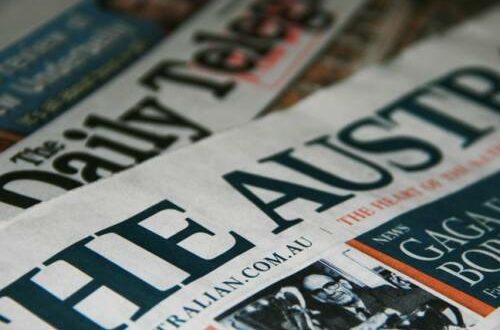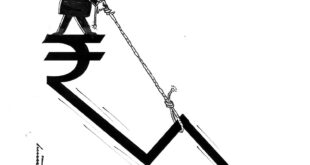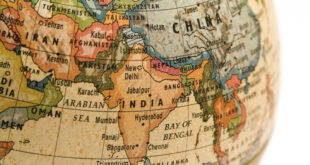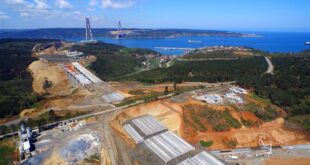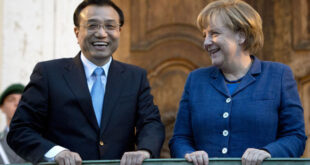A once-great newspaper market disappears
A milestone of a dubious kind was passed in Australia recently when it was discovered that the number of public relations practitioners had for the first time exceeded the number of journalists actually working as reporters and editors.
The trend has only deepened with more redundancies of journalists and offshoring of jobs at the country’s oldest news publisher, Fairfax Media. Analysts are now watching and waiting to see if the latest gamble by Fairfax – the downsizing of its major newspapers, The Sydney Morning Herald (SMH) and The Age, from broadsheet to tabloid page-size and the hopeful embrace of digital “platforms” – can arrest what seems a downward spiral.
A senior Australian banker, speaking on background, says financial markets are not convinced that the current Fairfax board, chaired by former chief of supermarket chain Woolworths, Roger Corbett, or its executive team under former newspaper editor Gregory Hywood, has found the formula to sustain the publisher.
Since Hywood was installed at the end of 2011, the Fairfax share price has hit successive new lows, bottoming at 35 cents in contrast to levels around A$5.00 only a few years back. The low price suggests a takeover and break-up play is inevitable sooner or later, drawing in some speculative investments by minor media figures hoping for a profit and/or Fairfax assets, who have pushed the share price to around 57 cents.
So far, however, the only major new player to show interest in reworking Fairfax has been the West Australian iron ore magnate Gina Rinehart, currently listed as the world’s richest woman thanks to the royalty flows and ore deposits left by her father, the late Lang Hancock.
Rinehart waded in last year to buy up Fairfax shares, heading up to the 19.9 percent trigger point where Australian market rules require a takeover bid for any further quick acquisitions. It made her the biggest shareholder in a field of smaller institutional investments.
Rinehart demanded three seats on the board, and was rebuffed by chairman Corbett for refusing to sign a charter of non-interference in editorial decisions. Rinehart is known for her strong beliefs on the far right fringe of Australia’s political debate, notably her idea of turning the north of the country into a special economic zone, with entrepreneurs such as herself paying low taxes and leaving her free to import low-wage workers.
Rinehart has since sold down her Fairfax holding to around 15 percent because of an indemnity for directors against litigation that cuts out at that level. But she remains the biggest shareholder, and has got one director installed, though one without much media experience, in her friend Jack Cowan, the founder of the Hungry Jack’s hamburger chain.
Her longer-term intentions remain a mystery, perhaps even to herself. With many billions in wealth (barring a crash in the Chinese economy) she has the financial capacity to eat Fairfax for lunch.
And can the dark eminence of global media, Rupert Murdoch, not be looking at possible gains for his own straitened print empire from a break-up of Fairfax? A merger of his national broadsheet, The Australian, which is said to be losing over A$50 million a year, with Fairfax’s just-profitable Australian Financial Review, would be one enticing possibility. Plus of course the demise of competition for his popular tabloids in Sydney and Melbourne.
Interestingly, Rinehart is a minor investor in the Ten Network, one of Australia’s three commercial free-to-air broadcasters, which is chaired by Lachlan Murdoch, the tycoon’s oldest son.
Meanwhile Fairfax continues to shrink. The latest circulation figures for the SMH and its Melbourne-based sister show a decline in sales of 14.5 percent over the past year, to around 150,000 copies a day on weekdays. Before that the company had claimed to have shed the subsidized component of circulation, chiefly bulk sales to airports and universities, and high-cost deliveries to rural areas.
The March 4 shift to tabloid size is hoped to arrest the decline, perhaps picking up more sales to those public transport commuters still wedded to print rather than computer tablets and smartphones. But Hywood has made it clear he is looking to weekend-only print newspapers in three to five years.
The tabloid size means Fairfax can continue to cut production costs by outsourcing print runs and selling off its giant presses in Sydney and Melbourne bought in an era when its Saturday papers ran to 200 broadsheet pages crammed with small “classified” ads for houses, cars and jobs, most of which have gone to websites.
In recent years Fairfax has recruited heavily in IT specialists and bought into websites, while its homegrown Domain website has a strong presence in real estate advertising. Yet while digital advertising and transaction revenues are starting to grow, overall the company is treading water. The latest results, for the July-December half year, show a 7.1 percent decline to A$1.1 billion, and a 1.4 percent drop in gross profit.
The end of that half-year also saw the sale of the most valued and profitable Fairfax asset, the New Zealand-based eBay-style transaction website TradeMe, acquired under a previous chief executive, David Kirk. Although the site had probably reached saturation in the New Zealand market, it was still the company’s most profitable step into the new digital age.
The A$606 million realized from the sale of the remaining 51 per cent of TradeMe, and some A$75 million from sale of an agricultural publishing venture in the United States, brought Fairfax group debt down from A$914 million to $197 million. This will bring interest savings this year, but it remains to be seen whether Fairfax is now a more inviting break-up target, or a lesser one.
Despite already having its own digital media expertise headed by its Metro Media chief executive Jack Matthews, Fairfax chief executive Hywood has gone outside the company for more digital ideas. In December he acquired a technology investment called Netus, founded and run by a former Microsoft executive, Daniel Petre, and a former eBay executive, Alison Deans. The price was not disclosed, but was rumored to be A$54 million.
Many wonder if the savings from laying off 1,900 employees, about a tenth of the Fairfax group staff, in late 2012, and the outsourcing of newspaper sub-editing to low-wage, low-benefit affiliates in suburban Sydney and New Zealand, aren’t being offset by a hiring and salary splurge in Fairfax executive ranks. Appointments of new division heads have tended to be followed by announcements of new pyramids of executives with impressive but mysterious titles.
This is a pattern familiar enough in many advanced economies, but matters particularly in Australia because of the importance of the Fairfax newspapers in the country’s political discourse. Though highly conservative for much of its history since the Fairfax family took over Sydney’s Herald in 1841, recent decades have seen its papers permeated by the liberal values of Melbourne’s Age, moulded into one of the world’s great newspapers under its late editor Graeme Perkin in the 1970s and 1980s when Fairfax was gradually acquiring it.
In their home bases of New South Wales and Victoria, the SMH and the Age respectively function as the political opposition, holding state governments to account for corruption and mismanagement. At the federal level, the newspapers have supported more tolerant, inclusive social policies and open-minded foreign relations. The Australian Financial Review long took a disrespectful approach to the protectionists and rent-seekers of the business world.
Elsewhere, aside from the government-funded Australian Broadcasting Corporation and SBS-TV (a state broadcaster aimed at ethnic minorities), the liberal media at national level is confined to a few websites. The most ambitious new entry has been the internet site The Global Mail, founded by travel booking website entrepreneur Graeme Wood. But it has failed so far to assert a place in the current public discourse, though it carries some fine articles in a magazine-style.
After just a year, Wood has now applied his additional media funds – reportedly A$30 million over five years — to helping Britain’s Guardian set up a special version of its website for Australia. The Guardian has been hiring reporters, including some of the best from Fairfax, with a plan to start before the next Australian budget speech in early May.
Commercial TV broadcasters are a welter of reality shows – cooking, talent, and home renovation competitions – while commercial radio networks tend to feature shock jocks with a penchant for stigmatizing refugees and immigrants, especially Muslim ones.
Murdoch’s local business, News Ltd, puts out some two-thirds of total daily newspaper circulation, and frequently veers in the same direction, with editors anticipating Murdoch’s rightwing views. Unlike the separation of print and digital businesses enforced on Murdoch elsewhere, his Australian arm includes the strong revenue and profit flows from his dominant cable-TV business, Foxtel, which carries the print side.
Although Fairfax insists the move to what it calls “compact” newspapers involves no loss of quality or serious journalism, the evidence in front of readers is otherwise. But for investigative teams at the SMH and the Age installed by previous regimes, the papers have been tabloid in ethos if not page size for months already.
Recycled wire stories, the political spin cycle of staged events, fake surveys pushed by those PR people, and endless trivia about alleged celebrities set the tone. Feel-good musings replaced the hard-hitting editorials of before. The institutional memory now remains with the dogged band of readers who write letters to the editor.
The Australian Financial Review now gives space to the self-interested wisdom of business leaders. Hywood has backed the proposal of gambling tycoon James Packer to build a massive hotel capped by a casino for Asia’s high-rollers on a state-owned site fronting Sydney Harbour. “Rally around James” is his message.
Aside from the financial daily, the current management seem intent on destroying their own brands, referring to “Fairfax Media” as the publisher of all content rather than individual mastheads. Yet the large digital readership it will try to monetize with pay-walls and tablet subscriptions this year comes to websites identified with the newspapers, notable smh.com.au and theage.com.au. What happens when the newspapers disappear?
Confidants of the bristle-haired editor of The Australian, Chris Mitchell, say he outlines his two key missions for Murdoch as being to bring down the present Labor government and to cause maximum damage to Fairfax. The latter has certainly got obsessively negative attention from his newspaper for many years. He will no doubt claim any credit, but compared to the damage Fairfax is doing to itself and its own mastheads, his efforts are fleabites.
Asia Sentinel
 Asia Finance News Asia finance news, banking, market analysis, business, Forex, trade, Cryptocurrency as it is happening in Asia. Trusted gateway for Asian financial news.
Asia Finance News Asia finance news, banking, market analysis, business, Forex, trade, Cryptocurrency as it is happening in Asia. Trusted gateway for Asian financial news.
